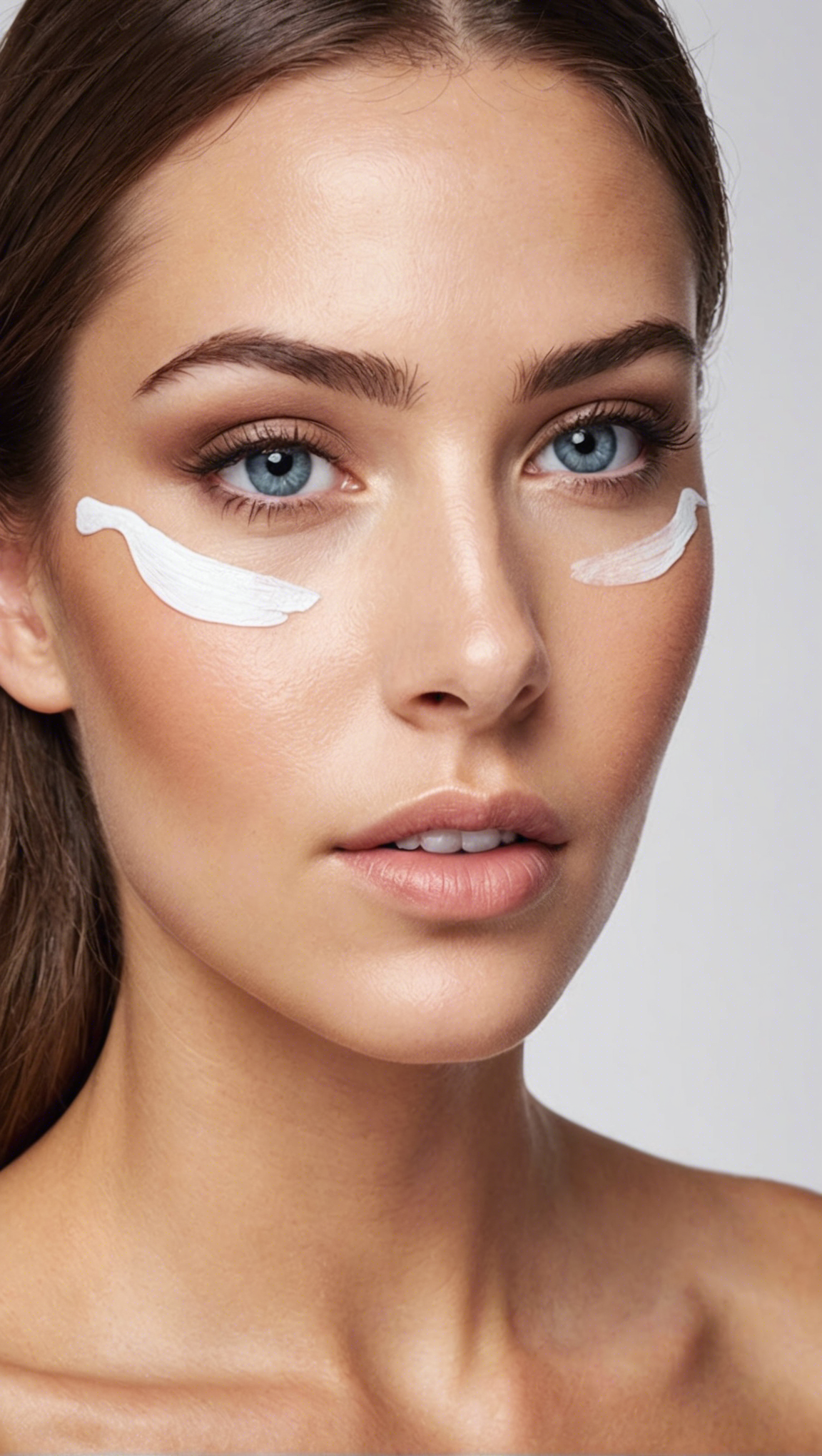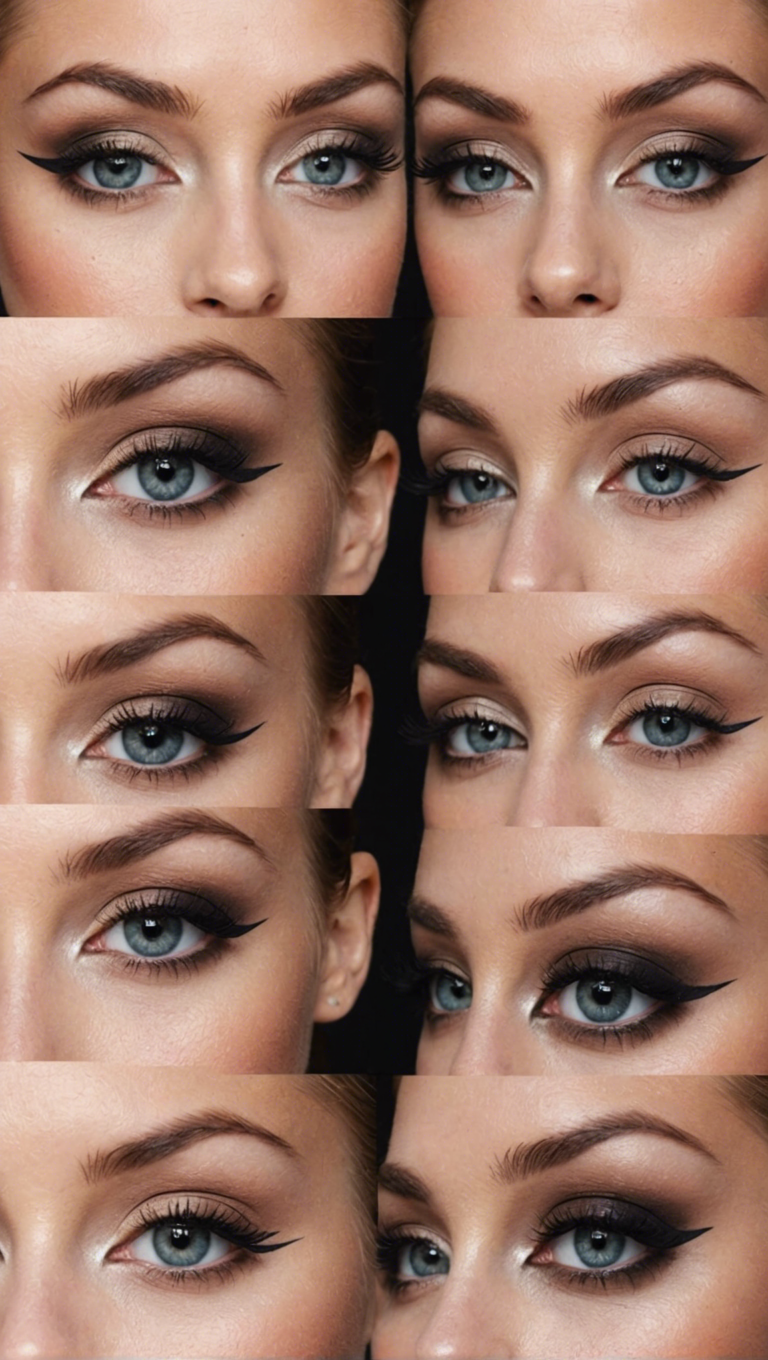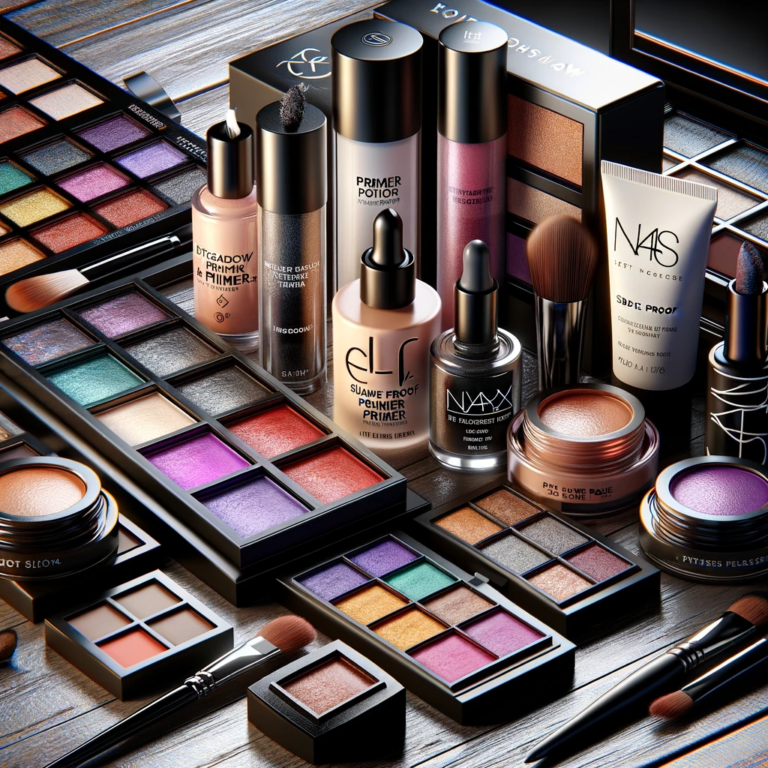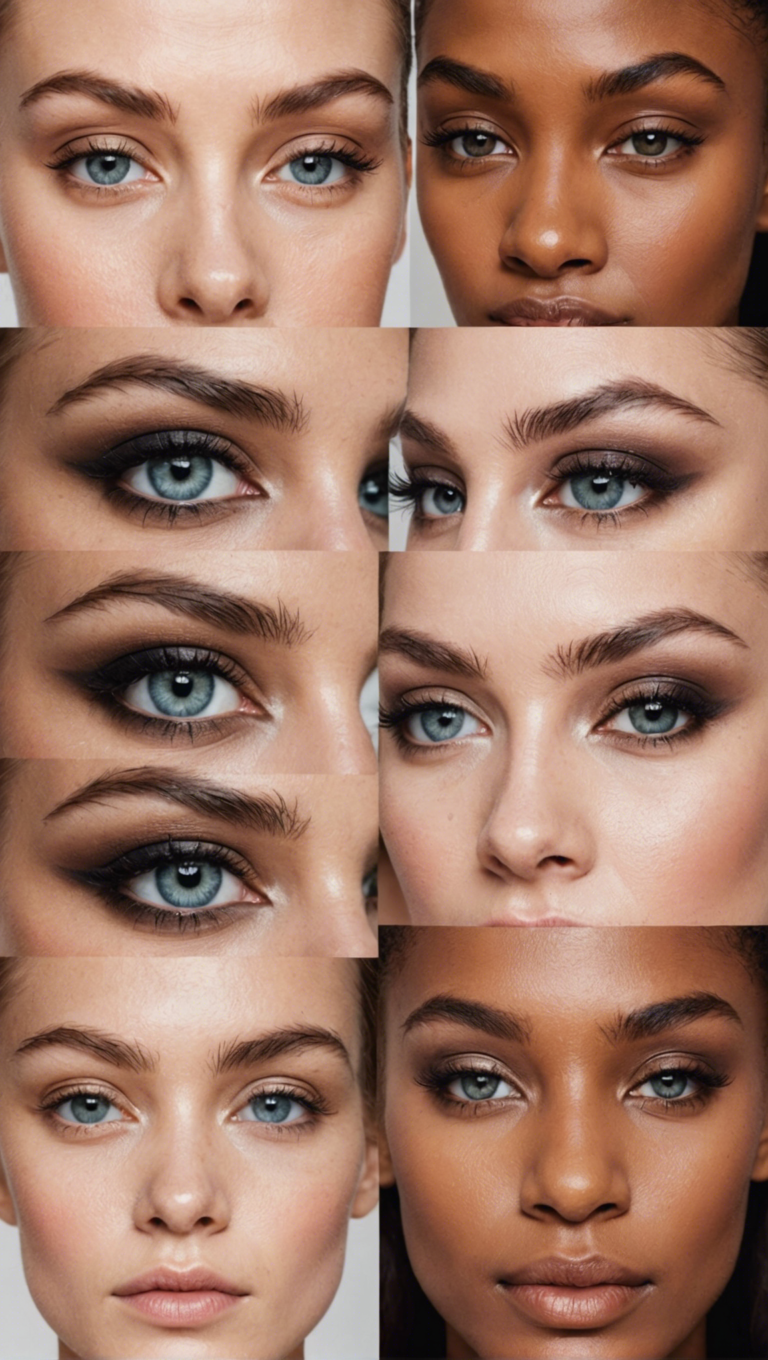The Science Behind Effective Eye Makeup Removers
The Science Behind Effective Eye Makeup Removers
When it comes to eye makeup, removing it effectively and gently is just as important as the application itself. The science behind efficient eye makeup removers is fascinating, with a delicate balance of ingredients and formulations designed to cleanse the delicate eye area without causing irritation.
Understanding the Challenges of Eye Makeup Removal
The skin around the eyes is incredibly thin and sensitive, making it susceptible to irritation and dryness. Traditional soap-based cleansers can be too harsh, stripping the natural oils and leaving the eye area feeling tight and uncomfortable. Additionally, many eye makeup products are formulated to be long-lasting and waterproof, making them challenging to remove.
The Role of Emulsifiers and Surfactants
Effective eye makeup removers rely on a combination of emulsifiers and surfactants to break down and dissolve the makeup. Emulsifiers, such as polysorbates and polyethylene glycols, help create a stable suspension of the makeup and oils, allowing them to be easily rinsed away. Surfactants, on the other hand, act as detergents, lifting and removing the makeup from the skin.
The Importance of pH Balance
The pH level of an eye makeup remover is crucial, as the delicate eye area has a natural pH that is slightly acidic, typically ranging from 4.5 to 7.0. Using a product with a pH that is too alkaline can disrupt the skin’s natural balance, leading to irritation and dryness. High-quality eye makeup removers are formulated with a pH that closely matches the eye area, ensuring gentle and effective cleansing.
The Benefits of Hydrating Ingredients
In addition to the cleansing agents, many effective eye makeup removers also contain hydrating ingredients, such as glycerin, hyaluronic acid, and aloe vera. These ingredients help to soothe and nourish the skin, counteracting the potential drying effects of the cleansing agents. The inclusion of these ingredients can help maintain the skin’s moisture barrier and prevent the delicate eye area from becoming overly dry or irritated.
The Role of Oil-based Removers
For particularly stubborn or waterproof eye makeup, oil-based removers can be highly effective. These formulas use natural or synthetic oils, such as olive oil, coconut oil, or mineral oil, to dissolve and lift the makeup. The oil-based nature of these removers allows them to penetrate deeply into the lashes and lids, ensuring thorough and gentle cleansing.
Considerations for Sensitive Skin
Individuals with sensitive skin or conditions like eczema or rosacea may require extra consideration when choosing an eye makeup remover. These individuals should look for formulas that are free of fragrances, alcohols, and other potential irritants, and may benefit from using a micellar water-based remover or a gentle, oil-free formula.
The science behind effective eye makeup removers is a delicate balance of ingredients and formulations, designed to cleanse the delicate eye area without causing irritation or dryness. By understanding the role of emulsifiers, surfactants, pH balance, and hydrating ingredients, consumers can make informed choices to find the right eye makeup remover for their individual needs.
The Importance of Proper Eye Makeup Removal Techniques
Unraveling the Science: Effective Eye Makeup Removal Techniques
Proper eye makeup removal is a crucial step in maintaining healthy, radiant skin around the delicate eye area. The science behind effective eye makeup removers lies in understanding the composition of various cosmetic products and the skin’s natural properties. By delving into the intricacies of this process, we can uncover the most efficient techniques to gently and thoroughly cleanse the eyes, leaving them refreshed and rejuvenated.
The Anatomy of Eye Makeup
Eye makeup, such as mascara, eyeliner, and eyeshadow, is designed to adhere firmly to the skin for long-lasting wear. These products often contain waxes, oils, and pigments that create a waterproof or smudge-proof barrier. While this ensures the makeup stays in place throughout the day, it also presents a challenge when it comes to removal.
The Science of Makeup Removal
The key to effective eye makeup removal lies in understanding the chemical composition of the cosmetic products and the skin’s natural properties. Makeup is typically composed of various oils, waxes, and pigments that can be stubborn to remove. The skin around the eyes is also delicate and sensitive, requiring a gentle approach to avoid irritation or damage.
Surfactants and Emulsifiers
Effective eye makeup removers often contain surfactants and emulsifiers, which play a crucial role in the removal process. Surfactants are molecules that can effectively break down the oil-based components of makeup, while emulsifiers help to create a suspension that can be easily rinsed away. By combining these two elements, eye makeup removers can effectively dissolve and lift the makeup from the skin.
pH Balance and Skin Compatibility
The pH balance of eye makeup removers is also an important factor to consider. The skin around the eyes has a slightly acidic pH, typically ranging from 4.5 to 6.5. Using a makeup remover that is too alkaline can disrupt the skin’s natural pH, leading to dryness, irritation, and even increased sensitivity. Formulations that are pH-balanced and skin-compatible can help maintain the delicate balance of the eye area.
Hydration and Nourishment
In addition to effectively removing eye makeup, the best removers also provide hydration and nourishment to the skin. Ingredients like glycerin, ceramides, and antioxidants can help to soothe and replenish the delicate eye area, leaving it soft, supple, and healthy-looking.
Gentle Techniques for Eye Makeup Removal
When it comes to removing eye makeup, it’s essential to use gentle techniques to avoid tugging or rubbing the skin, which can lead to premature aging and damage. Begin by applying the makeup remover to a clean cotton pad or reusable makeup remover cloth, and gently press it against the eyelid and lash line, allowing the ingredients to break down the makeup. Avoid scrubbing or pulling at the skin, and instead, use a gentle, circular motion to lift and remove the makeup.
The Role of Double Cleansing
For a more thorough cleansing, consider incorporating a double cleansing routine. Start by using an oil-based or micellar makeup remover to dissolve and lift the makeup, followed by a water-based cleanser to remove any remaining residue and impurities. This two-step process helps to ensure that the skin is left completely clean and refreshed, without any lingering traces of makeup or impurities.
Understanding the science behind effective eye makeup removal is the key to maintaining the health and appearance of the delicate eye area. By utilizing the right formulations, techniques, and routines, you can ensure that your eyes are left clean, nourished, and ready to face the day with confidence. Invest in high-quality eye makeup removers and incorporate gentle, yet effective removal methods into your skincare regimen for optimal results.
Ingredients That Make Eye Makeup Removers Effective
The Science Behind Effective Eye Makeup Removers
Removing eye makeup can be a tedious task, but finding the right eye makeup remover can make all the difference. The effectiveness of an eye makeup remover depends on its formulation and the specific ingredients it contains. Understanding the science behind these ingredients can help you choose the most suitable product for your needs.
Cleansing Agents
One of the primary functions of an eye makeup remover is to effectively remove various types of eye makeup, such as waterproof mascara, eyeliner, and eyeshadow. Cleansing agents, such as surfactants, play a crucial role in this process. Surfactants are molecules that have both hydrophilic (water-loving) and hydrophobic (water-repelling) parts, allowing them to interact with both water-based and oil-based compounds.
The hydrophobic portion of the surfactant molecule can attach to the oil-based components of makeup, while the hydrophilic portion can dissolve and emulsify these compounds, making them easier to rinse away. Commonly used surfactants in eye makeup removers include polysorbates, glycerin-based cleansers, and micellar water, which have been shown to effectively remove even the most stubborn eye makeup.
Emollients and Lubricants
In addition to cleansing agents, eye makeup removers often contain emollients and lubricants to provide a gentle and soothing experience during the removal process. Emollients, such as oils and silicones, help to soften and condition the delicate skin around the eyes, reducing the risk of irritation or dryness.
Lubricants, on the other hand, help to create a smooth and gliding application, making it easier to gently wipe away makeup without tugging or pulling at the skin. Common emollients and lubricants found in eye makeup removers include glycerin, dimethicone, and various plant-derived oils, such as jojoba, almond, and coconut oil.
pH Balance
The pH balance of an eye makeup remover is also an important factor in its effectiveness and skin-friendliness. The skin around the eyes is particularly sensitive, and using a product with an inappropriate pH can lead to irritation, dryness, or even disruption of the skin’s natural protective barrier.
Ideally, eye makeup removers should have a pH that is close to the natural pH of the skin, which is slightly acidic, typically around 4.5 to 6.5. This helps to maintain the skin’s natural balance and prevent any pH-related issues.
Soothing and Calming Ingredients
To further enhance the user experience and promote skin health, many eye makeup removers incorporate soothing and calming ingredients. These can include plant-based extracts, antioxidants, and hydrating agents that help to reduce irritation, redness, and any discomfort that may arise during the makeup removal process.
For example, ingredients like aloe vera, chamomile, and green tea are known for their anti-inflammatory and skin-soothing properties, making them valuable additions to eye makeup removers. These ingredients can help to calm the delicate skin around the eyes and leave it feeling refreshed and nourished.
The effectiveness of an eye makeup remover is largely determined by its formulation and the specific ingredients it contains. Understanding the science behind these components, such as cleansing agents, emollients, lubricants, pH balance, and soothing ingredients, can help you make an informed decision when choosing the right eye makeup remover for your needs. By selecting a product that effectively removes makeup while also caring for the delicate skin around the eyes, you can enjoy a seamless and comfortable makeup removal experience.
Understanding the Skin’s Sensitivity Around the Eyes
The skin around the eyes is notably delicate and sensitive compared to other areas of the face. This region requires specialized care and attention due to its unique anatomical features and susceptibility to various skin concerns. Understanding the science behind the eye area’s sensitivity can help individuals develop effective routines and make informed choices when selecting eye makeup removers.
The Anatomy of the Eye Area
The skin surrounding the eyes is extraordinarily thin, with an average thickness of only 0.5-0.6 millimeters. This thinness is a result of the minimal subcutaneous fat in this area, which typically provides cushioning and insulation for the rest of the face. The lack of fat in the eye region, combined with the delicate nature of the skin, makes it more prone to fine lines, wrinkles, and other signs of aging.
Another factor contributing to the sensitivity of the eye area is the presence of the sebaceous glands. These glands, which produce natural oils to keep the skin hydrated, are more abundant around the eyes. However, the delicate balance of these oils can be easily disrupted, leading to issues like dryness, irritation, and puffiness.
The Importance of Gentle Eye Makeup Removal
Properly removing eye makeup is crucial for maintaining the health and appearance of the eye area. When makeup is not effectively removed, it can lead to various skin problems, including clogged pores, inflammation, and even premature aging.
Traditional makeup removal methods, such as harsh scrubbing or using makeup wipes, can be overly aggressive for the sensitive skin around the eyes. These techniques can strip away the natural oils, compromising the skin’s protective barrier and causing irritation.
The Science Behind Effective Eye Makeup Removers
Effective eye makeup removers are designed to gently and thoroughly cleanse the eye area without disrupting the skin’s natural balance. These products typically contain a combination of gentle surfactants, emollients, and hydrating ingredients that work together to dissolve and lift away makeup, while also nourishing the delicate skin.
One of the key ingredients in effective eye makeup removers is oil. Oils, such as micellar water or cleansing oils, are particularly effective at dissolving waterproof and long-wearing makeup without causing dryness or irritation. The oil-based formulas can effectively break down the bonds between the makeup and the skin, allowing for a gentle and efficient removal process.
In addition to oils, many eye makeup removers also contain hydrating ingredients like glycerin, aloe vera, and hyaluronic acid. These ingredients help to maintain the skin’s moisture balance, preventing dryness and providing a soothing effect on the eye area.
Eye Makeup Removers into a Skincare Routine
When using eye makeup removers, it’s essential to follow a gentle and thorough cleansing routine. Begin by gently massaging the product onto the eye area, allowing it to break down the makeup. Avoid excessive rubbing or tugging, as this can further irritate the delicate skin. Rinse the area thoroughly with lukewarm water to ensure all traces of makeup and the remover are removed.
Following the eye makeup removal step, it’s recommended to follow up with a gentle, non-irritating facial cleanser to address any remaining impurities on the rest of the face. This two-step cleansing process helps to effectively remove all makeup and dirt while maintaining the skin’s natural balance.
Remember, the eye area is a unique and sensitive part of the face that requires specialized care. By understanding the science behind effective eye makeup removers and incorporating them into a gentle skincare routine, individuals can maintain the health and appearance of the delicate eye area, promoting a more youthful and radiant complexion.
Choosing the Right Eye Makeup Remover for Your Needs
Identifying Your Skin Type and Makeup Removal Needs
When it comes to choosing the right eye makeup remover, considering your skin type and specific needs is crucial. This step-by-step guide will help you navigate the world of eye makeup removers and find the perfect one for you.
Understanding Skin Types
The first step in selecting the right eye makeup remover is to determine your skin type. Broadly, skin types can be categorized as dry, oily, combination, or sensitive. Knowing your skin type will help you choose a remover that won’t strip or irritate your skin.
Dry skin types may benefit from hydrating, oil-based removers that won’t leave the delicate eye area feeling tight or uncomfortable. Oily skin types, on the other hand, may prefer a lightweight, water-based remover that effectively removes makeup without adding excess oil.
Combination skin, which has both dry and oily areas, may require a balanced remover that addresses both concerns. Sensitive skin types should opt for gentle, fragrance-free formulas that won’t cause redness or irritation.
Evaluating Makeup Removal Needs
Next, consider the type of eye makeup you typically wear and how stubborn it is to remove. Some eye makeup removers are designed specifically for waterproof or long-wear formulas, while others may be better suited for lighter, everyday makeup.
If you wear heavy or waterproof eye makeup, you’ll likely need a more robust remover that can effectively break down and lift those formulas. Micellar waters or dual-phase removers, which combine oil and water, are often effective in these cases.
For lighter makeup, a gentle, hydrating remover may be sufficient. Cleansing oils, balms, or cream-based removers can be gentle yet thorough in removing everyday eye makeup.
Considering Additional Benefits
Beyond basic makeup removal, some eye makeup removers offer additional benefits that may be appealing. These can include:
- Hydrating and nourishing ingredients: Look for removers with moisturizing components like glycerin, hyaluronic acid, or plant-based oils to keep the delicate eye area hydrated.
- Soothing and calming properties: Ingredients like chamomile, aloe vera, or green tea can help soothe and calm the skin, making the removal process more gentle.
- Multifunctional capabilities: Some removers can also be used to clean makeup brushes or remove lip and face makeup, offering more versatility.
By considering your skin type, makeup removal needs, and any desired additional benefits, you can narrow down the options and find the perfect eye makeup remover for your unique requirements.
Testing and Evaluating Products
Once you’ve identified the key factors to consider, it’s time to test out a few eye makeup remover options. Start with a small amount and gently massage it onto the eye area, observing how effectively it removes your makeup, how it feels on your skin, and whether it leaves any residue or irritation.
Pay close attention to how your skin reacts, as everyone’s skin can respond differently to various formulas. Be patient and give each product a fair trial before making a decision.
Remember, the "right" eye makeup remover is the one that effectively removes your makeup, cares for your skin, and leaves you feeling comfortable and confident. With a little bit of research and experimentation, you’ll be able to find the perfect match for your individual needs.
Key Takeaway:
The Science Behind Effective Eye Makeup Removers: Unlocking the Key to Gentle and Thorough Cleansing
When it comes to eye makeup removal, it’s not just about wiping away the visible cosmetics. The science behind effective eye makeup removers delves deep into understanding the unique characteristics of the delicate eye area and the ingredients that can effectively cleanse without causing irritation.
The Importance of Proper Eye Makeup Removal Techniques
Proper eye makeup removal is crucial for maintaining the health and appearance of the eyes. Residual makeup left on the skin can lead to clogged pores, irritation, and even infections if not properly cleansed. Utilizing the right techniques, such as gently massaging the eye area and using a soft, damp cloth, can ensure that every trace of makeup is removed without causing further damage.Ingredients That Make Eye Makeup Removers Effective
The key to an effective eye makeup remover lies in its formulation. Ingredients like oils, emulsifiers, and surfactants work together to break down and dissolve even the most stubborn waterproof and long-wearing eye makeup. Oils, such as jojoba or coconut oil, can effectively remove makeup while providing nourishment to the delicate skin. Emulsifiers help to create a smooth, non-greasy texture, while surfactants aid in the removal of dirt, oil, and impurities.Understanding the Skin’s Sensitivity Around the Eyes
The skin around the eyes is exceptionally thin and delicate, making it more susceptible to irritation and dryness. Eye makeup removers must be formulated with this in mind, using gentle, non-irritating ingredients that won’t strip the natural oils or disrupt the skin’s barrier function. Harsh chemicals, fragrances, and aggressive scrubbing can cause further damage, leading to redness, stinging, and even premature aging.Choosing the Right Eye Makeup Remover for Your Needs
When selecting an eye makeup remover, it’s essential to consider your individual skin type and needs. Oily or combination skin may benefit from a water-based or micellar formula, while dry or sensitive skin may fare better with a creamy, oil-based remover. Those with specific concerns, such as stubborn waterproof makeup or lash extensions, may require a specialized formula designed to address those needs without compromising the delicate eye area.The science behind effective eye makeup removers is a delicate balance of understanding the unique properties of the eye area, utilizing the right ingredients, and employing gentle techniques. By choosing the right eye makeup remover and incorporating proper removal methods, you can ensure a thorough, yet gentle, cleansing experience that leaves your eyes feeling refreshed and your skin healthy and radiant.
Conclusion
Removing eye makeup can be a delicate and often overlooked part of our daily beauty routine, but understanding the science behind effective eye makeup removers is crucial for maintaining the health and appearance of the delicate eye area. Throughout this article, we’ve explored the key factors that contribute to the effectiveness of eye makeup removers, from the importance of proper removal techniques to the specific ingredients that help break down stubborn makeup, all while considering the unique sensitivity of the skin around the eyes.
One of the fundamental principles underlying effective eye makeup removal is the concept of "like dissolves like." Many eye makeup products, such as waterproof mascara and long-wear eyeliners, are designed to be highly resistant to water and sebum, the natural oils produced by the skin. As a result, traditional soap-and-water methods are often ineffective at thoroughly removing these stubborn formulas. Eye makeup removers, on the other hand, are formulated with specific ingredients that can effectively dissolve and lift away these persistent makeup products.
At the heart of this process are emulsifiers, which act as a bridge between the oil-based makeup and the water-based remover. By forming a stable emulsion, these ingredients allow the two otherwise incompatible substances to mix, enabling the makeup to be rinsed away. Commonly used emulsifiers in eye makeup removers include polysorbates, PEG-based compounds, and silicone-derived surfactants. These molecules possess both hydrophilic (water-loving) and lipophilic (oil-loving) properties, allowing them to effectively solubilize and remove even the most stubborn eye makeup formulas.
In addition to emulsifiers, many effective eye makeup removers also contain solvents and humectants that further enhance their ability to break down and remove makeup. Solvents, such as propylene glycol or isopropyl alcohol, can help to dissolve and lift away waterproof and long-wearing makeup products, while humectants like glycerin work to maintain the skin’s moisture balance and prevent dryness after removal.
Another key factor in the effectiveness of eye makeup removers is their ability to address the unique sensitivity of the skin around the eyes. The delicate nature of this area, with its thin, fragile epidermis and high concentration of sebaceous glands, requires a gentle and nourishing formulation to avoid irritation or damage. Many high-quality eye makeup removers incorporate calming and soothing ingredients, such as chamomile, aloe vera, or vitamin E, to help counteract any potential irritation and ensure a comfortable cleansing experience.
When it comes to choosing the right eye makeup remover for your needs, it’s important to consider factors like your skin type, the specific makeup products you use, and any individual sensitivities or concerns you may have. For those with dry or sensitive skin, a creamy, oil-based remover can provide gentle yet effective makeup removal without stripping the skin. Conversely, individuals with oily or acne-prone skin may benefit from a water-based, non-greasy formulation that won’t clog pores or leave a heavy residue.
Ultimately, the science behind effective eye makeup removers is a delicate balance of formulation, ingredient selection, and consideration for the unique needs of the eye area. By understanding these principles and making informed choices about the products we use, we can ensure that our daily makeup removal routine is not only thorough and effective but also gentle and nourishing for the delicate skin around our eyes. With the right eye makeup remover in our beauty arsenal, we can maintain the health and vibrancy of this crucial feature, allowing our eyes to shine with confidence.







